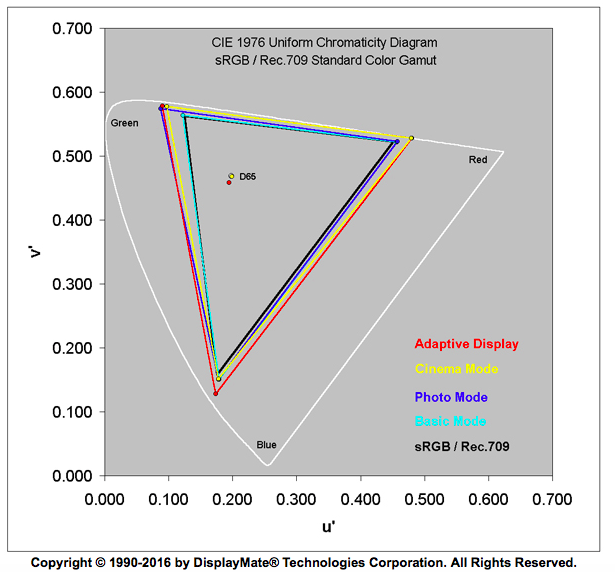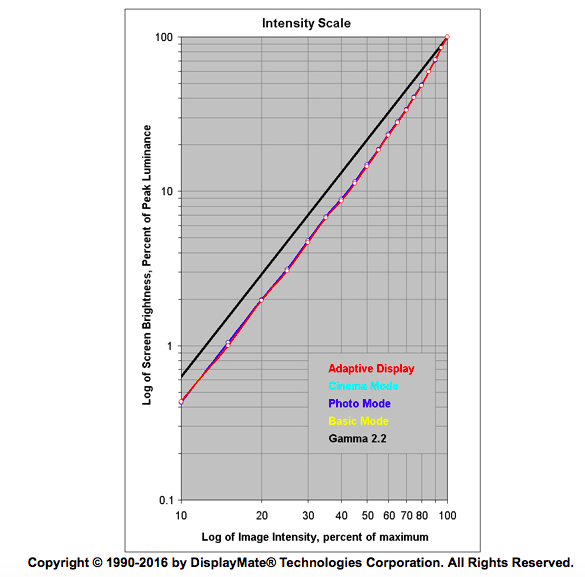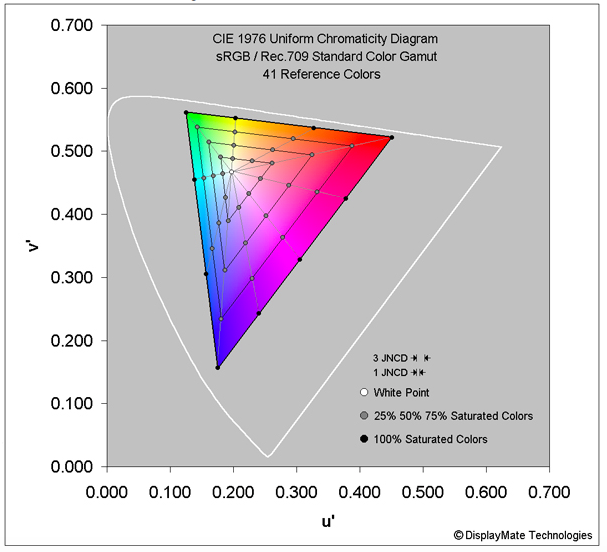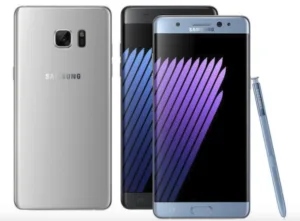In the Olympics of smartphone displays, the Samsung mobile Galaxy Note 7 with its flexible QHD OLED technology is well poised to claim the gold medal. Simply put, the latest display industry shoot-out from DisplayMate Labs asserts “The Galaxy Note 7 is the most innovative and high performance smartphone display that we have ever tested. It leapfrogs the displays on the Galaxy Note 5 and Galaxy S7 to become the best performing smartphone display ever,” according to the lab’s founder and principal, Dr. Ray Soneira.

Soneira’s Galaxy Note 7 Display industry shoot-out turns the lab’s rigorous battery of tests toward the new 5.7″ 2560×1440 pixel resolution (518 ppi) diamond pixel display from Samsung. The OLED display features a unique dual-edge curved screen that targets daylight readability with “record breaking performance” in both Peak Screen Brightness (that includes high contrast in high ambient light) plus low Screen Reflectance. But the Galaxy Note 7 goes well beyond just the best daylight readable screen. There are a host of improvements including a wide color gamut DCI-P3 Digital Cinema Mode that can display the Note 7’s video content with high dynamic range (HDR.) Buyers will get this, plus a Blue Light Filter for better night viewing plus a front and back dual ambient light sensor that improves the auto bright feature. Read on for the nitty gritty and links to details that only Dr. Ray can provide.
To crack Daylight Readability (that is, the washout of image color saturation and contrast in high ambient light), Samsung focused on both Peak Screen Brightness, which reached a new record in mobile displays at 1,000+ cd/m² and achieved highest contrast in high ambient light, according to the DisplayMate findings. For standard image content, the Note 7 reached +480 cd/m², at parity or better than best in class for this size display, Soneira said (it’s even higher on the home screen, measured at over 520 cd/m² according to the report). Screen reflectance, while not a record breaker was at 4.6%, “…close to the lowest that we have ever measured for a smartphone,” according to Soneira. This combination provided the Galaxy Note 7 with the best Daylight Readability display available on the market today. Here is the link to the full details for the Galaxy Note 7 Shoot-out.
Galaxy Note 7 with 5.7″ diagonal diamond pixel flexible OLED display: Source: Samsung
Manual vs. Auto Brightness
Soneira states in his report: when its display brightness is set manually (with the slider) it can be adjusted to reach a maximum screen Brightness of up to 639 cd/m², “which is very impressive,” he said. With automatic brightness engaged, the Note 7 produces “…an impressive record maximum screen brightness of up to 1,048 cd/m² in high ambient light, where high screen brightness is really needed.”
Overall, Soneira said this display has a quantitive measure of screen visibility rated “…the highest that we have ever measured for any smartphone display.”
The Galaxy Note 7 QHD display performance features:
It’s important to note that the display in the new Galaxy Note 7 is a curved OLED display made on a flexible plastic substrate. For now, images don’t bend because of the rigid cover glass, but can be seen on the edges where touch control is also available.
Other enhancements include:
- 4 color gamuts and screen modes
- A new DCI-P3 color gamut and digital cinema mode that is used on 4K UltraHD TVs, so the Galaxy Note 7 can display the latest high-end video content.
- A new HDR video mode, plus a video enhancer that provides HDR-like expanded dynamic range for all videos.
- A record high peak brightness of over of 1,000 cd/m², which improves screen visibility in very high ambient light, and provides the very high screen brightness needed for HDR.
- The first smartphone to have dual front and back dual ambient light sensors for improved automatic brightness.
- A new blue light filter that allows the user to adjust and reduce the amount of blue light from the display for better night viewing.
- A new and even stronger curved Gorilla Glass 5 protecting the display.
- The always-on display and personalized auto brightness control that were introduced on the Galaxy S7.
- A very high resolution 2560×1440 display with very high 518 pixels per inch.
So polish up that gold medal as the Korea-based display company has continued an unbroken path of iterative display improvements that push the envelope of handheld-sized OLED technology ever forward. The latest improvements for this QHD 5.7″ AMOLED include cracking daylight readability with a 1000+ cd/m² peak brightness output on a low reflectance screen, and new features that include a wide color gamut DCI-P3 digital cinema mode that can display the Note 7’s content with high dynamic range (HDR.) Kudos to the Samsung Mobile Display group for this ground breaking display, and lest we forget, Dr. Soneira for helping us keep score.
– Steve Sechrist




